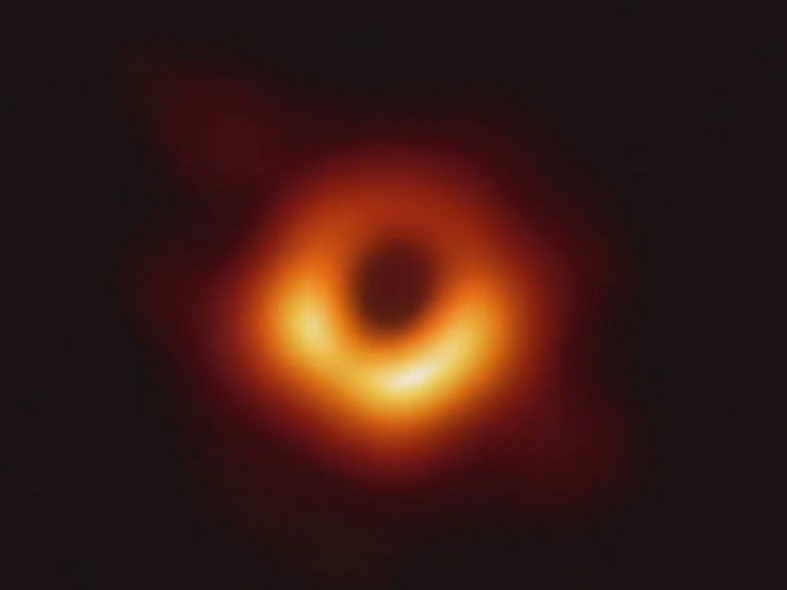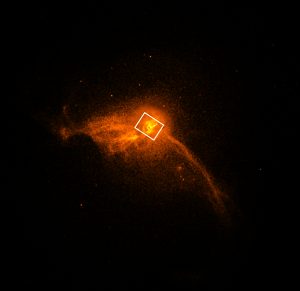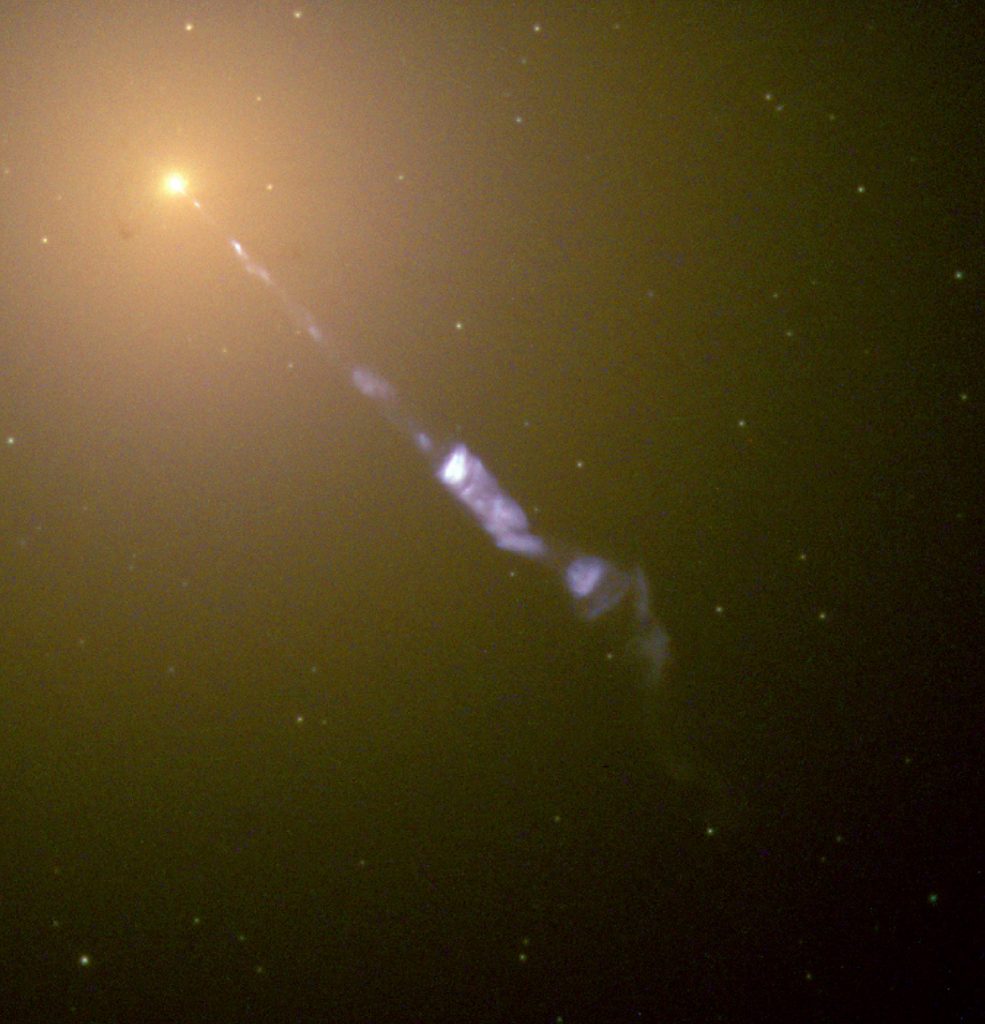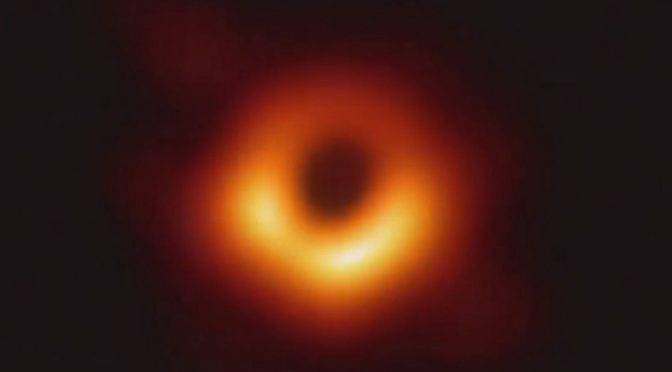
A global network of radio telescopes known as the Event Horizon Telescope (EHT) has produced the first ever image of the silhouette of a black hole.
The image shows hot luminous gas surrounding the black hole’s event horizon – the sphere beyond which light cannot escape the black hole’s gravitational influence.
The team responsible has worked for over a decade to improve upon the technique of Very Long Baseline Interferometry in order to capture the image. The resolution of a telescope is usually dependent upon the size of the dish, or aperture – usually equivalent to the width of the mirror or lens in an optical telescope or the the width of the dish in the case of a radio telescope. The technique of interferometry creates a much larger ‘synthetic aperture’ by linking the images from two or more telescopes together. The further apart the telescopes, the larger the synthetic aperture. The EHT’s synthetic aperture has a resolution equivalent to a dish with a diameter equal to the distance between Spain and the South Pole – where the two furthest apart telescopes in the array are located.
Five petabytes of data were used to construct the image. Because current internet speeds are not sufficient to handle this amount of data, it had to be physically transported to a central location from all eight sites in the EHT array.

The black hole is located at the center of the M87 galaxy – a supergiant elliptical galaxy in the constellation of Virgo. Estimates for the mass of this black hole range from around 3.5 to 6.6 billion times the mass of the Sun.
The supermassive black hole is surrounded by a rotating accretion disk of ionized gas. The disk rotates at a velocity of roughly 1,000 km per second and has a maximum radius of around 0.2 light years, or around 12,000 Astronomical Units (where 1 Astronomical Unit (AU) is the equivalent to the average distance between the Earth and the Sun). The radius of the black hole’s event horizon – or Schwarzschild radius – is around 120 AU.
The black hole’s powerful magnetic field causes it to emit a narrow jet of ionised material from the accretion disk aligned with its axis of rotation. The material in this jet travels at relativistic speeds and reaches a distance of at least 5,000 light years from the black hole.

